
ORO Editions
Publishers of Architecture, Art, and Design Gordon Goff: Publisher
www.oroeditions.com
info@oroeditions.com
Published by ORO Editions
Copyright © 2022 ORO editions & Tongji University Press.
All rights reserved. No part of this book may be reproduced, stored in a retrieval system, or transmitted in any form or by any means, including electronic, mechanical, photocopying or microfilming, recording, or otherwise (except that copying permitted by Sections 107 and 108 of the U.S. Copyright Law and except by reviewers for the public press) without written permission from the publisher.
You must not circulate this book in any other binding or cover and you must impose this same condition on any acquirer.
Author: Vladimir Belogolovsky
Foreword: Iwan Baan
Editor: Charles Linn
Book Design: Ahankara Art
Coordinator: Jialin (Crisie) Yuan
Managing Editor: Jake Anderson
10 9 8 7 6 5 4 3 2 1 First Edition
ISBN: 978-1-951541-62-0
Color Separations and Printing: ORO Group Ltd.
Printed in China.
ORO Editions makes a continuous effort to minimize the overall carbon footprint of its publications. As part of this goal, ORO Editions, in association with Global ReLeaf, arranges to plant trees to replace those used in the manufacturing of the paper produced for its books. Global ReLeaf is an international campaign run by American Forests, one of the world’s oldest nonprofit conservation organizations. Global ReLeaf is American Forests’ education and action program that helps individuals, organizations, agencies, and corporations improve the local and global environment by planting and caring for trees.
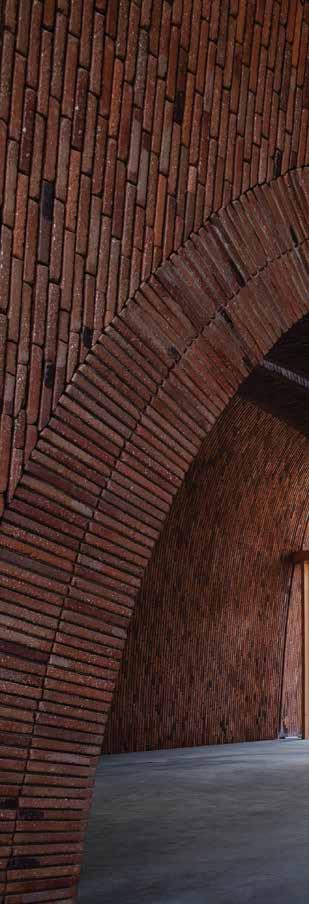 Cover Photo: UCCA Dune Art Museum, Aranya, Qinhuangdao, Hebei Province, 2018. Photo by Wu Qingshan © OPEN Architecture
Cover Photo: UCCA Dune Art Museum, Aranya, Qinhuangdao, Hebei Province, 2018. Photo by Wu Qingshan © OPEN Architecture

Foreword by Iwan Baan 4 Introduction by Vladimir Belogolovsky . . . . . 16 01 WANG Shu & LU Wenyu . . . . . . . 40 Amateur Architecture Studio, Hangzhou 02 Philip F . YUAN . . . . . . . . . . . . . . 52 Archi-Union Architects, Shanghai 03 LIU Yichun & CHEN Yifeng . . . . . 64 Atelier Deshaus, Shanghai 04 Yung Ho CHANG . . . . . . . . . . . . . 74 Atelier FCJZ, Beijing 05 LI Xinggang . . . . . . . . . . . . . . . . 82 Atelier Li Xinggang, Beijing 06 ZHANG Lei . . . . . . . . . . . . . . . . . 94 AZL Architects, Nanjing 07 Binke Lenhardt & DONG Hao . . 104 Crossboundaries, Beijing 08 XU Tiantian . . . . . . . . . . . . . . . . 112 DnA_Design and Architecture, Beijing 09 LIU Jiakun . . . . . . . . . . . . . . . . 120 Jiakun Architects, Chengdu 10 LI Xiaodong . . . . . . . . . . . . . . . 130 Li Xiaodong Atelier, Beijing 11 MA Yansong . . . . . . . . . . . . . . . 140 MAD Architects, Beijing 12 WANG Shuo . . . . . . . . . . . . . . . 152 META-Project, Beijing 13 Lyndon NERI & Rossana HU . . . 160 Neri&Hu, Shanghai 14 LI Hu . . . . . . . . . . . . . . . . . . . . . 172 OPEN Architecture, Beijing 15 ZHU Pei . . . . . . . . . . . . . . . . . . 180 Studio Zhu-Pei, Beijing 16 HUA Li . . . . . . . . . . . . . . . . . . . 188 Trace Architecture Office, TAO, Beijing 17 ZHANG Li . . . . . . . . . . . . . . . . . 196 Atelier TeamMinus, Beijing 18 TONG Ming . . . . . . . . . . . . . . . . 204 TM Studio, Shanghai 19 WANG Hui . . . . . . . . . . . . . . . . 214 URBANUS, Beijing, Shenzhen 20 DONG Gong . . . . . . . . . . . . . . . 228 Vector Architects, Beijing 21 ZHANG Ke . . . . . . . . . . . . . . . . . 238 ZAO/standardarchitecture, Beijing Bibliography 248 Biography of Vladimir Belogolovsky . . . . . . 249
Foreword
by Iwan Baan
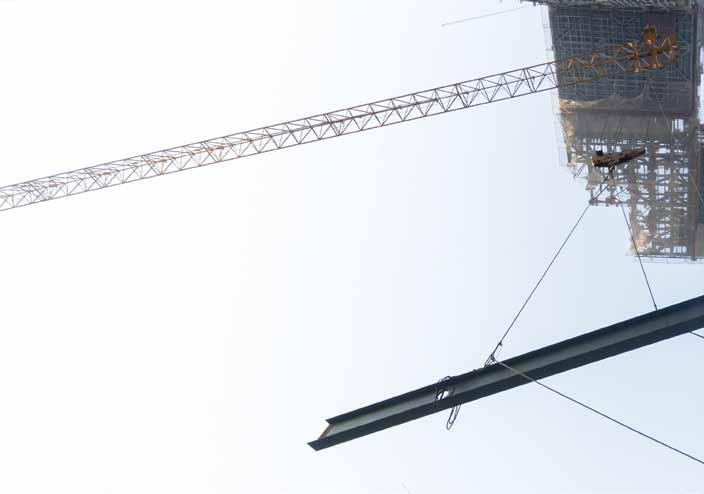
My introduction to China occurred in 2005, when I first flew to Beijing with Rem Koolhaas to start documenting the construction of his CCTV complex [ 001 ]. It was just about to go into construction then, and I proposed to Rem that I would document the whole process from start to finish. I felt that there was an interesting story to tell, which related to how Beijing was changing, how this massive project would impact the city. It was an interesting time for China, and I am glad I was there to record it. My background is in documentary photography and I had only started working documenting Rem’s work in Europe and the U.S. one year before. We have similar interests in cities and public spaces. What I like most is depicting how people live. Photography is an amazing tool
that allows me to step into very different worlds to capture the life within. I am particularly fascinated with people’s adaptability to different circumstances and their endless creativity in creating their own, unique environments. I am interested in documenting a whole spectrum of lifestyles—from within sleek and sophisticated structures and vernacular and humble places. I think the most interesting part starts when the architect has left, and people start to take over and explore the place how they see fit. I like to capture these moments. I like to discover things that are unforeseen and serendipitous.
What was particularly striking about building CCTV was the construction site itself, documenting how migrant workers from all over rural China lived
4

right there by the thousands. There were at times 10,000 of them working and living on the site. They were building this grand, technologically advanced building, but the way they did it was largely by hand, using basic materials and techniques. The whole thing felt often so primitive, crude, and somewhat medieval. It was a community of people living on the construction site around the clock—working, resting, eating, conversing, watching TV, working again, and so on. That’s what I was trying to capture. Every six to eight weeks I would go back, and that went on for a few years.
It was an incredible time to be able to experience Chinese cities’ transformation on an epic scale, and because I was going to Beijing so frequently, I
approached Jacques Herzog and Pierre de Meuron to document their Olympic Stadium, the Bird’s Nest [ 002 ]. I also met Steven Holl and started working with him on the Linked Hybrid residential complex in Beijing [ 003 ] and his other projects in Shenzhen, Nanjing, and Chengdu. I eventually photographed all Zaha Hadid’s buildings in China—in Beijing, Shanghai, and Guangzhou. I was fortunate to experience up close how these Western architects were making a great impact, as I went to China with them on multiple occasions. I always had my own space and time to explore these sites. Critics may complain that some of these buildings were not perfectly executed. But we need to stand back and realize where
5
001 OMA, CCTV Headquarters, Beijing, 2002-12 © Iwan Baan (2007)

 002 Herzog & de Meuron, National Olympic Stadium (Bird’s Nest), Beijing, 2003-08 © Iwan Baan
002 Herzog & de Meuron, National Olympic Stadium (Bird’s Nest), Beijing, 2003-08 © Iwan Baan

they were built, under what circumstances, on what scale, and of what complexity.
Given that, I think these buildings were a great success for China. These architects realized their lofty dreams in China. At that time, they could not have done such projects anywhere else in the world on that scale. That in itself is an incredible achievement.
On these trips I also started noticing very different kind of projects being built by local architects. They were the works by the very architects that Vladimir Belogolovsky met and interviewed for this book, China Dialogues . First, I met Wang Shu and his wife Lu Wenyu. At the time he did not speak English and we communicated mostly through Wenyu. I was fascinated by his architecture because it was so different from what I was used to see in China. Unlike many of the new construction projects in Chinese cities that follow the same strategy of building from scratch, here was this local architect who resisted that tendency and tried to do his architecture differently.
Or, for instance the Jinhua Architecture Park in Jinhua near Hangzhou, a micro city of 17 pavilions scattered along the banks of the river Wu [ 004 ]. They were
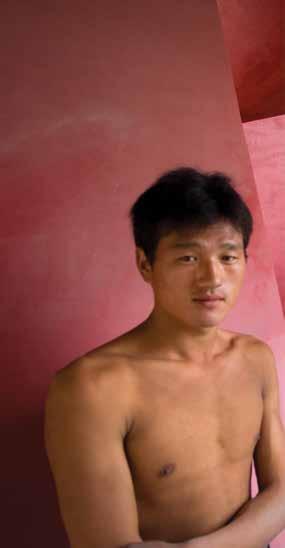
designed both by architects from China and around the world. They were all brought together by Ai Weiwei. Apart from Wang Shu there were such locals as Liu Jiakun and Xu Tiantian. Throughout my travels in China, I met other architects like Zhu Pei, Zhang Lei of AZL Architects, URBANUS, and Ma Yansong of MAD Architects. I worked with Ma Yansong on many of his projects and I documented the construction of Harbin Opera House [ 106 ].
But working with Wang Shu remains my closest collaboration in China. Over the years, I documented all
8
003 Steven Holl Architects, Linked Hybrid Housing, Beijing, 2003-09 © Iwan Baan

his buildings there, and we worked on many publications and his only monograph (Lars Müller, 2017). I find his work incredibly refreshing, particularly the way he combines his knowledge of Chinese culture, building materials, and techniques and incorporates them in very original and contemporary ways. Shu understands the difficulties of building in China. He is very selective about focusing on what he wants to articulate, understanding that certain details or finishes can’t be achieved. He brings a traditional understanding of Chinese architecture to the new era.
One of my favorite projects is his Academy of Art, Xiangshan Campus in Hangzhou [ 005-008 ], because he has been working there for so many years. These buildings are completely embraced by the students. They are great for working and studying. There is nothing polished or pristine about them. These spaces are sometimes rough and can be beat up by art students, and the whole campus feels like a small city. The buildings are not just singular freestanding structures, but are experienced as a single organism of interconnected creatures. They are intertwined with each other and the landscape all around. Now
9
004 Fernando Romero, Bridging Teahouse, Jinhua Architecture Park, Jinhua, Zhejiang Province, 2014 © Iwan Baan
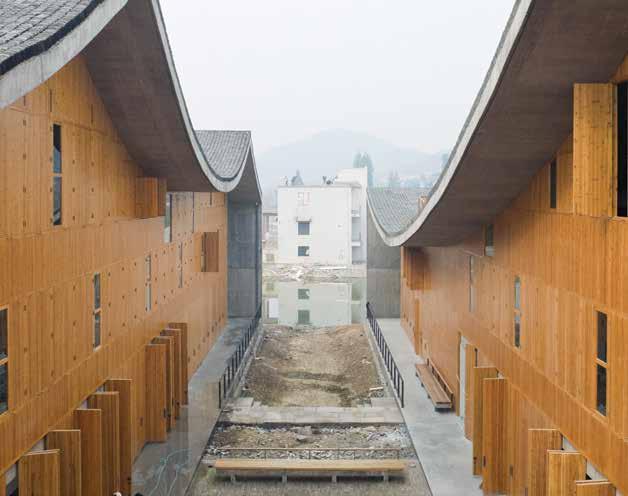
he is working on many projects throughout China and the quality is getting better and better. He is able to push clients into his direction and buildings are becoming more complex. He keeps exploring his idea that every project is a little village where every nook and cranny is completely different. All of his buildings are independent, confident, and surprising.
What is especially rewarding about traveling in China is exploring the country’s rich and very diverse history. There is such an incredible variety of vernacular architecture in terms of building materials, methods, and understandings of space. There are many building techniques based on local materials,
traditions, culture, topography, and so on. Every place is a discovery. But much of that is now being lost due to the breakneck speed of development. It is the disappearance of such rich culture that gives me pressure to document it as much as I can every time I go to China.
The historic Tulou Housing in Yongding in Fujian Province [ 009 ] is among the most memorable places that I had a chance to visit. This is where the Hakka people live in round multi-family fortress-like buildings that are made of stone, earth, and timber. Some of them were given World Heritage listings. Then there are underground houses in the north that are called yaodong, which means a house cave, an earth
10
005 Xiangshan Campus, China Academy of Art, Hangzhou, Phase II, 2004-07 © Iwan Baan
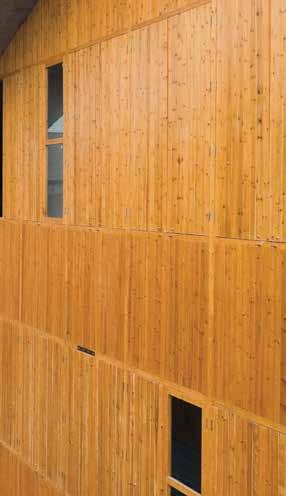
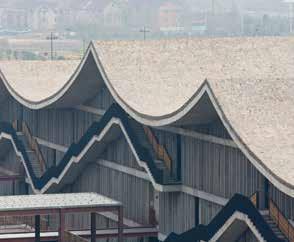
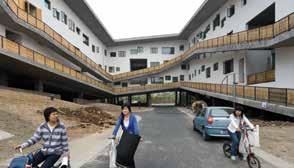

11
006 Xiangshan Campus, China Academy of Art, Hangzhou, Phase II 2004-07 © Iwan Baan
007 Xiangshan Campus, China Academy of Art, Hangzhou, Phase II 2004-07 © Iwan Baan
008 Wang Shu of Amateur Architecture Studio, Xiangshan Campus, China Academy of Art, Hangzhou, Phases I & II, III 2002–13 © Iwan Baan
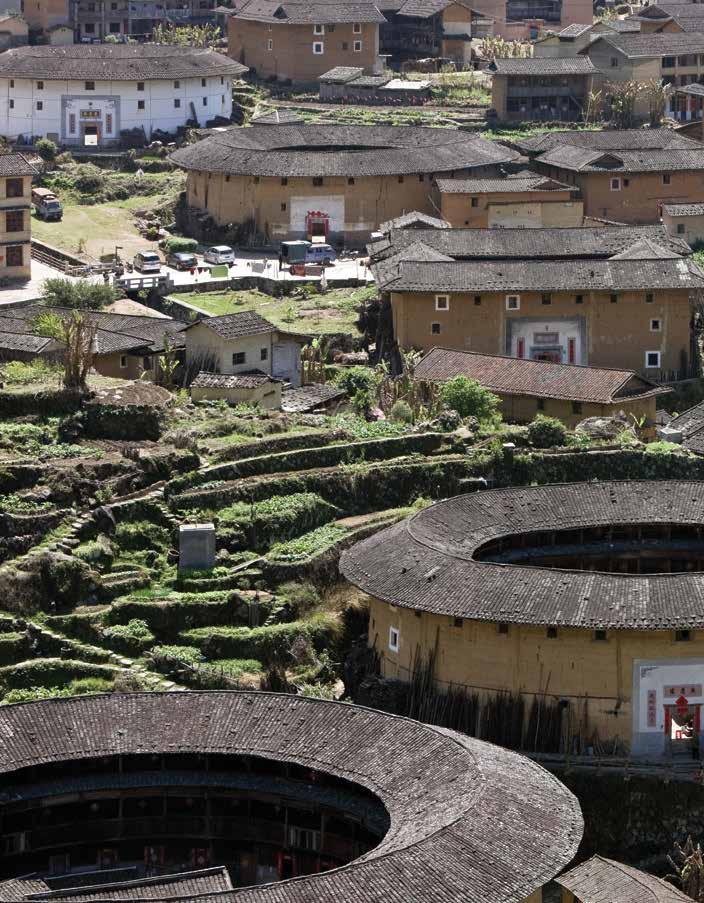
 009 Tulou Housing, Yongding, Fujian Province © Iwan Baan
009 Tulou Housing, Yongding, Fujian Province © Iwan Baan
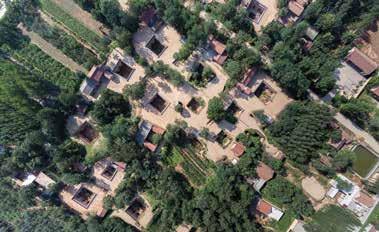

shelter dwelling [ 010 - 012 ]. These houses are excavated horizontally from a sunken courtyard in the center. Other buildings I came across on the East Coast of Shandong province are distinguished by high-pitched roofs, all covered in dry plants. They are called seaweed bungalows and are designed to keep the interior warm in winter and cool in summer. Then there are incredible mud houses in Xinjiang province in the west part of the country. Each province presents very different thinking about architecture.

Unfortunately, many of these unique structures are disappearing. Demolition is occurring all over China—from hutongs in Beijing to ancient housing projects on the outskirts of many provincial cities. Structures that are preserved often become tourist hot spots and tend to lose their authentic character. For a long time, I tried to go to Ürümqi, the capital of Xinjiang Uyghur Autonomous Region. There used to be an incredible citadel entirely built out of mud. Finally, when I was able to go there, I discovered that it was entirely razed and parts of it were being rebuilt
14
010 Underground dwellings, Sanmenxia, Henan Province © Iwan Baan
011 Underground dwellings, Sanmenxia, Henan Province © Iwan Baan
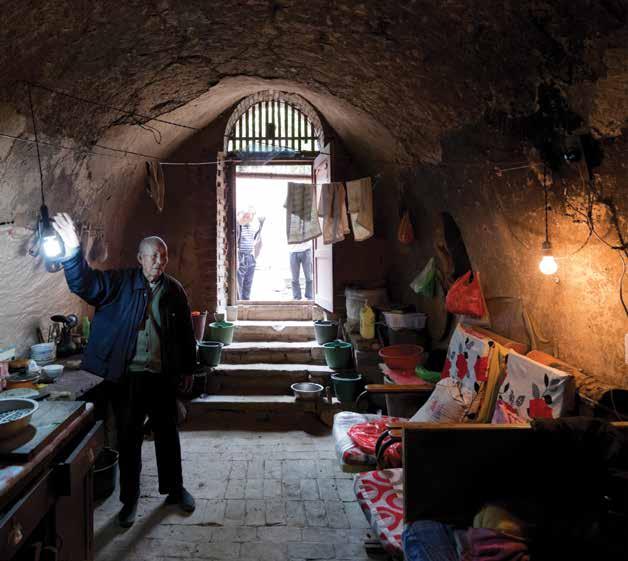
as a replica. Such demolition is reasoned as the only way to protect these fragile, and therefore unsafe, structures.
So often these unique buildings are being bulldozed and reconstructed as fake concrete versions. Authenticity is being lost. It is heartbreaking to see that kind of destruction. Very little real history is being preserved. Recently, this attitude is beginning to change, but for so many places it is too late. What’s fascinating about all these buildings is that they are
built by hand, all from the most local materials, with great knowledge of what you can do with very specific materials right from the site. Nothing is mass-produced, but, of course, these structures need to be repaired by hand, by people who understand the traditional building techniques, something which is vanishing quickly. There is an incredible beauty in these spaces, which is being lost. Naturally, I have a sense of urgency, a mission of sort, to document these unique places as much as possible.
15
012 Underground dwellings, Sanmenxia, Henan Province © Iwan Baan
In the ‘90s, We All Became Free
AN INTRODUCTION BY VLADIMIR BELOGOLOVSKY
EVEN WITHOUT FLOWERS AND TREES IT WOULD STILL MAKE A GARDEN
TONG Jun (TUNG Chuin, 1900-83)
Glimpses of Gardens in Eastern China
TO ME, ANY TYPE OF ARCHITECTURE, NO MATTER WHAT ITS FUNCTION, IS A HOUSE .
WANG Shu Imagining the House
I first went to China in 2002, a year after the International Olympic Committee awarded the 2008 Summer Games to Beijing. That initial trip was about exploring nature, cuisine, ancient temples, archeological sites, and, in general, experiencing lifestyles in China, mainly outside of its major cities. I was motivated by the pure curiosity of a Western tourist driven to an Eastern country in search of the old world, the exotic, hoping to catch a glimpse of a rich traditional culture on the cusp of its inevitable radical transformation. At the time, there was no modern, or rather contemporary, architecture in China to speak of. There were only the promising first hints of the development of a potentially new architectural language being undertaken by just a handful of independent architects almost entirely under radar at that time.
Speaking of modern architecture in China, virtually all buildings built there during the 20th century, no matter how distinctive and compelling, were derivative one way or another. No architectural masterpieces were created in China in the entire 20th
century either by local or foreign masters. It was a combination of factors, including the weight of millennia-old Chinese history, the Chinese Civil War (1927-49), wars with Japan, the Cultural Revolution, and the country’s prolonged isolation from much of the world that held its architecture from the eventual entry into the modern period for so long.
When China finally ascended onto the world’s stage it did so with a bang [ 013 ]. And it was architecture that gave its many achievements a tangible substance. The Beijing Olympics in 2008 and Shanghai Expo in 2010 came off spectacularly. One ambitious development followed another, encouraging hundreds of millions of Chinese to relocate from sleepy villages to roaring cities. We now no longer seem to be surprised by the sheer scale and complexity of the kinds of engineering and architectural projects that today are more likely to take place in China than anywhere else on the planet.
We have become accustomed to the spectacular buildings and infrastructure being built there: CCTV
17
“In China Dialogues Vladimir Belogolovsky charts a panorama of Chinese architecture through the words of its main players. He draws his ‘landscape with figures’ with excellent prose, deep understanding, and outspoken wit. The curator makes conversation with a dash of contact sport into an art form, showing once more that interviews are as intelligent as the interviewer.”
Luis Fernández-Galiano , Editor-in-chief, Arquitectura Viva , Madrid
“Vladimir Belogolovsky’s book gathers an inquisitive collection of thoughts from outstanding architects in contemporary China; it is a critical documentation of the author’s in-depth conversations about the past, the future, and the current moment of Chinese architecture.”
Cui Kai , Honorary President, Chief Architect of China Architecture Design & Research Group (CADG), Beijing
“With refreshing query, engaging themes, and deep insights, Vladimir Belogolovsky’s dialogues with China’s cutting-edge architects investigate and illustrate a vivid scene of contemporary Chinese architecture.”
Li Xiangning , Dean and Professor, Tongji University
“Until the turn of the century, China was generally seen as a country of an ideologically oriented eclectic architecture. However, during the past two decades numerous talented young architects have emerged, projecting new imagery and meanings to today’s architecture in general, which is increasingly declining into a shallow commercial aestheticization. Vladimir Belogolovsky shares his deep personal knowledge of current Chinese architecture and the leading individual designers, as well as their thinking and intentions.”
Juhani Pallasmaa, Professor Emeritus, Aalto University, Helsinki
“Vladimir Belogolovsky is an important voice in a global architectural realm. His book China Dialogues is a pivotal introduction to current architecture in China that did not exist before to such an extent. Well-traveled, the author shares his deep personal knowledge of current Chinese architects’ thinking and intentions. Through his judicious editorial choices, this scholarly work synthesizes diverse directions through contrasting examples of very strong authentic and beautiful architecture that explores the deepest strata of China’s culture, which is so dear to my heart. The book is full of wonderfully unexpected discoveries of projects with vernacular evocations of unique places. Belogolovsky’s dialogues should be the primary text for westerners to understand the ethos of Chinese architecture.”
Antoine Predock, Architect and Professor, Albuquerque, New Mexico, Winner of the 2006 AIA Gold Medal
252


 Cover Photo: UCCA Dune Art Museum, Aranya, Qinhuangdao, Hebei Province, 2018. Photo by Wu Qingshan © OPEN Architecture
Cover Photo: UCCA Dune Art Museum, Aranya, Qinhuangdao, Hebei Province, 2018. Photo by Wu Qingshan © OPEN Architecture





 002 Herzog & de Meuron, National Olympic Stadium (Bird’s Nest), Beijing, 2003-08 © Iwan Baan
002 Herzog & de Meuron, National Olympic Stadium (Bird’s Nest), Beijing, 2003-08 © Iwan Baan









 009 Tulou Housing, Yongding, Fujian Province © Iwan Baan
009 Tulou Housing, Yongding, Fujian Province © Iwan Baan




